Cool Tech: The Best Of CeBIT
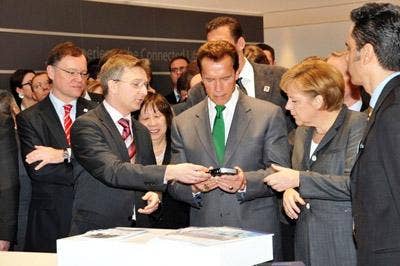
German Chancellor Angela Merkel, right, and California Governor Arnold Schwarzenegger enjoy a demonstration of Netgear's new ITV2000 Internet TV player at the company's booth at the CeBIT technology fair in Hannover, Germany, courtesy of Netgear's managing director for Central Europe, Thomas Jell, left, and David Soares, far right, global sales chief. Merkel and Schwarzenegger opened the technology fair last Monday and spent the following day touring the halls.
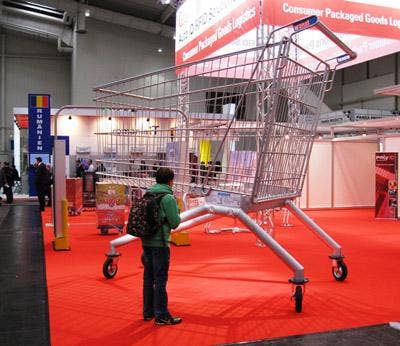
Forget Texas -- everything's bigger in Hannover. The sprawling Deutsche Messe fairgrounds contain dozens of exhibition halls and pavilions, including whole buildings devoted to the three major themes of CeBIT 2009 -- Green IT, Webciety and official partner state California. All told, enough cool technology is on display to fill several giant shopping carts ... if anybody's still got the capital to buy it.
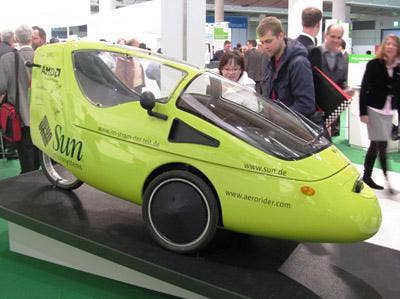
Sun Microsystems goes for a twofer at CeBIT -- not only was the Silicon Valley-based company feted for its California roots, but it's one of just a handful of vendors showcased in the Green IT pavilion, where environmentally friendly technologies, such as Sun's very own battery-powered Aerorider hybrid tricycle, are on display.
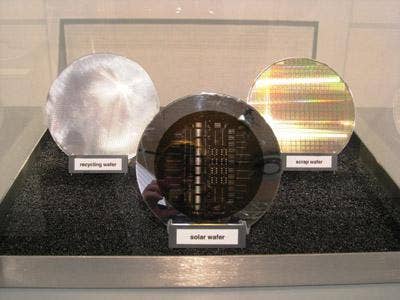
Part of IBM's contribution to the Green IT movement on display at CeBIT is the computing giant's semiconductor wafer-reclamation process, honored with the National Pollution Prevention Roundtable's "Most Valuable Pollution Prevention Award" in 2007. The process uses a specialized pattern removal technique that efficiently removes intellectual property from the surface of scrap silicon wafers to repurpose them for the manufacture of silicon-based photovoltaic cells for solar panels. Repurposed wafers can also be reused by semiconductor manufacturers as "monitor wafers" in internal manufacturing calibration.
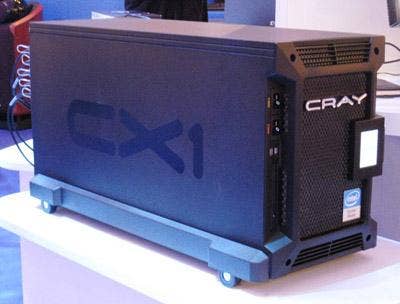
As muscular as Cray's CX1 supercomputer appears today, it's got a lot less footprint than the behemoths built by Seymour Cray for Control Data in the late 1960s and later at his own Seattle-based company. The famously C-shaped Cray-1A weighed 5.5 tons -- by contrast, today's much more powerful CX1 tips the scales at about 137 pounds when fully loaded with all 16 Intel Xeon-based blade servers and all the I/O modules as the chassis will hold. This Cray-Intel collaboration was launched last September and here enjoys pride-of-place at Intel's private CeBIT pavilion.
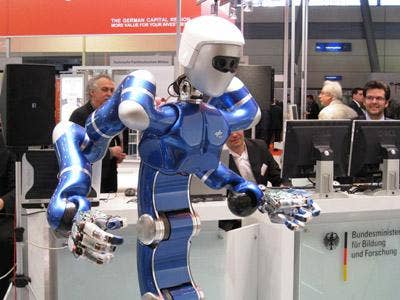
Robots are always a big draw at CeBIT and this year's Asimovian attendees were no exception. Running the gamut from practical, industrial products to stylized humanoids, robotic specimens such as this iced tea-making mechanical man attracted big crowds at the trade fair's Future Parc exhibition of tomorrow's technology.
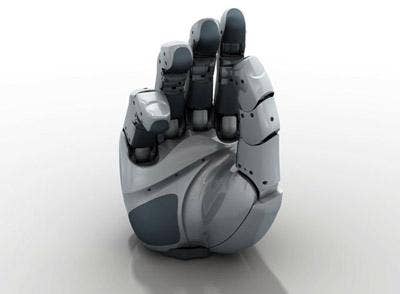
Winners of iF International Forum Product Design awards at CeBIT 2009 include familiar products such as the Apple iPhone, but also lesser-known marvels of industrial design such as this five-fingered, multisensor humanoid hand designed by Munich, Germany-based Genesis-design and jointly developed by engineers at Wessling, Germany-based DLR and the Harbin Institute of Technology. Surprisingly light for its mechanical complexity, the hand's actions are powered by 15 motors integrated into the fingers and palm -- each joint also has an absolute angle sensor and a strain gauge-based joint torque sensor. The realtime communication to the hand's supervising controller is performed via high-speed bus.
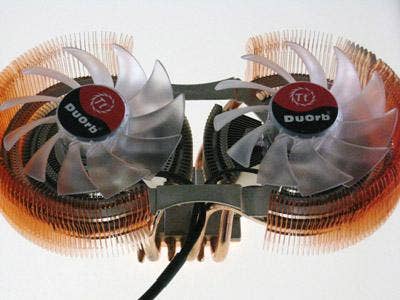
ThermalTake Technology of Taipei, Taiwan, has an iF Product Design winner in its DuOrb motherboard cooler, designed to reduce system temperatures jacked up by central processors and other working PC hardware. One of the twin LED-lit 80mm fans dissipates heat generated by the CPU while the other works on the RAM and surrounding territory. Six circular heat pipes penetrate 362 fins to transmit heat efficiently as the mirror-coated copper base and copper fins provide maximum thermal dissipation performance.
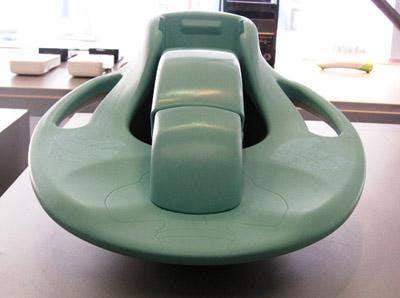
No, this isn't a UFO full of grotesque alien life forms, but this product's purpose isn't much more pleasant. Perhaps the oddest winner of an iF Product Design Award on display at CeBIT, the warm, plastic Cleanius bedpan is Emerkingen, Germany-based designer ServoClean's solution to the uncomfortable chill of cold steel.
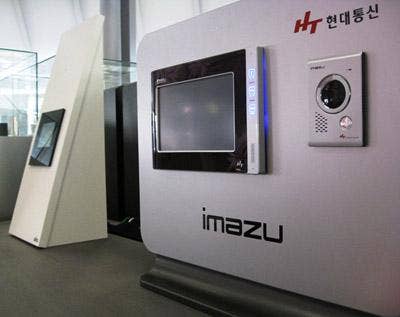
A pair of eye-catching home networking products -- Hyundai's HNT-3100 master control pad, right, and the Il Vetro Comfort video intercom by SKS-Kinkel Elektronik of Hof, Germany -- are displayed side by side at CeBIT's homage to industrial design at the Deutsche Messe fairgrounds. Both wall-mounted units took top honors in this year's iF Product Design competition.
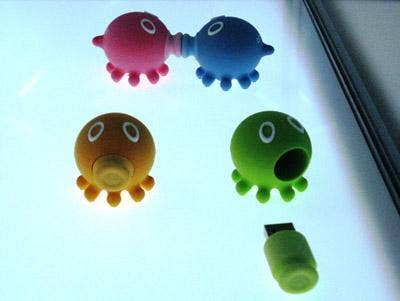
A-Data of Chung Ho City, Taiwan, calls its iF Award-winning USB flash drive the Kissing Octopus -- but we hope they'll forgive us if we suggest these adorable little storage units look more like pigs. Can we split the difference and classify the little smoochers as octo-pigs? And might we also request that no data pretending towards seriousness ever, ever be stored on these things?
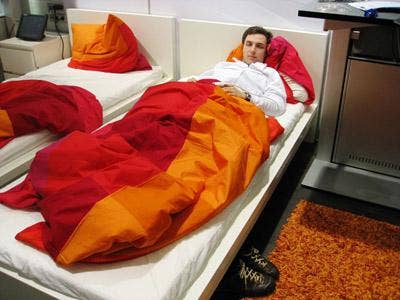
Sleep apnea is as serious as a heart attack -- which is why the Fraunhofer Institute for Integrated Circuits in Erlangen, Germany, has developed the SomnoSens home sleep monitoring system for detecting the onset of both health conditions. Seen here on display in the Adaptive Assistance section of the Future Parc exhibition at CeBIT, the wireless SomnoSens prototype detects sleep apnea by measuring respiratory flow and effort while also monitoring the sleeper's heart rate and other vital signs. Our own amateur medical advice is that you avoid sleeping like this guy or you'll get a crick in your neck.
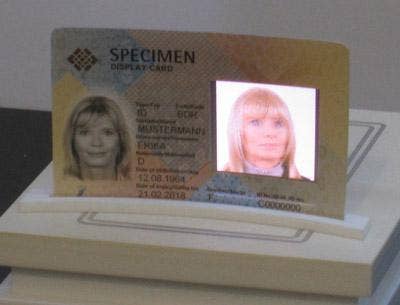
Forgive the hyperbole, but Berlin-based secure identification maker Bundesdruckerei has some mind-blowing technology -- like this tiny prototype video display for ID cards and passports. And no, it's not a hologram. The screen is bendable and only a few microns thick, turning on only when brought in range of a power supply providing juice via radio frequency. Despite its recent acquisition by the German federal government, Bundesdruckerei doesn't yet have a customer for this technology -- a representative at CeBIT told us he thinks commercial production is between three to five years away.
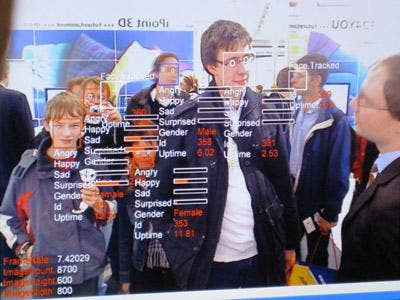
Passers-by enjoy making faces at the camera as this facial expression-reading display showcased at CeBIT's Future Parc exhibition detects, evaluates and reports their mood and gender in realtime. The platform-independent software and trainable algorithms that power the system were devised at the Fraunhofer Institute for Integrated Circuits, which suggests market research applications for the technology.
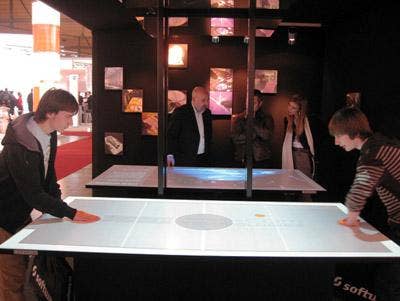
CeBIT visitors have a go at air hockey minus the physical puck and mallets, courtesy of Berlin-based multimedia system maker Art+Com Technologies. The company's Touchmaster tabletop is a large-scale multitouch presentation system with sensors that generate 400 readings per square meter. That makes for a fast game when the puck is in flight, though we observed digital mallet-to-puck contact that often lagged a split second behind the real thing.